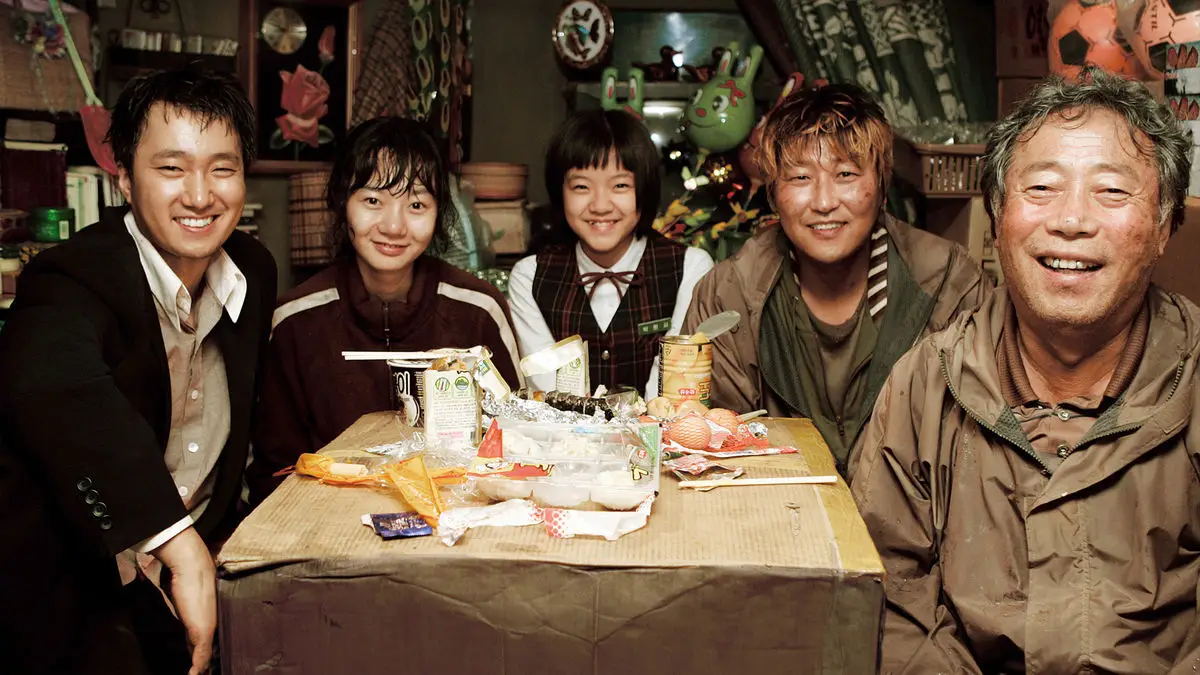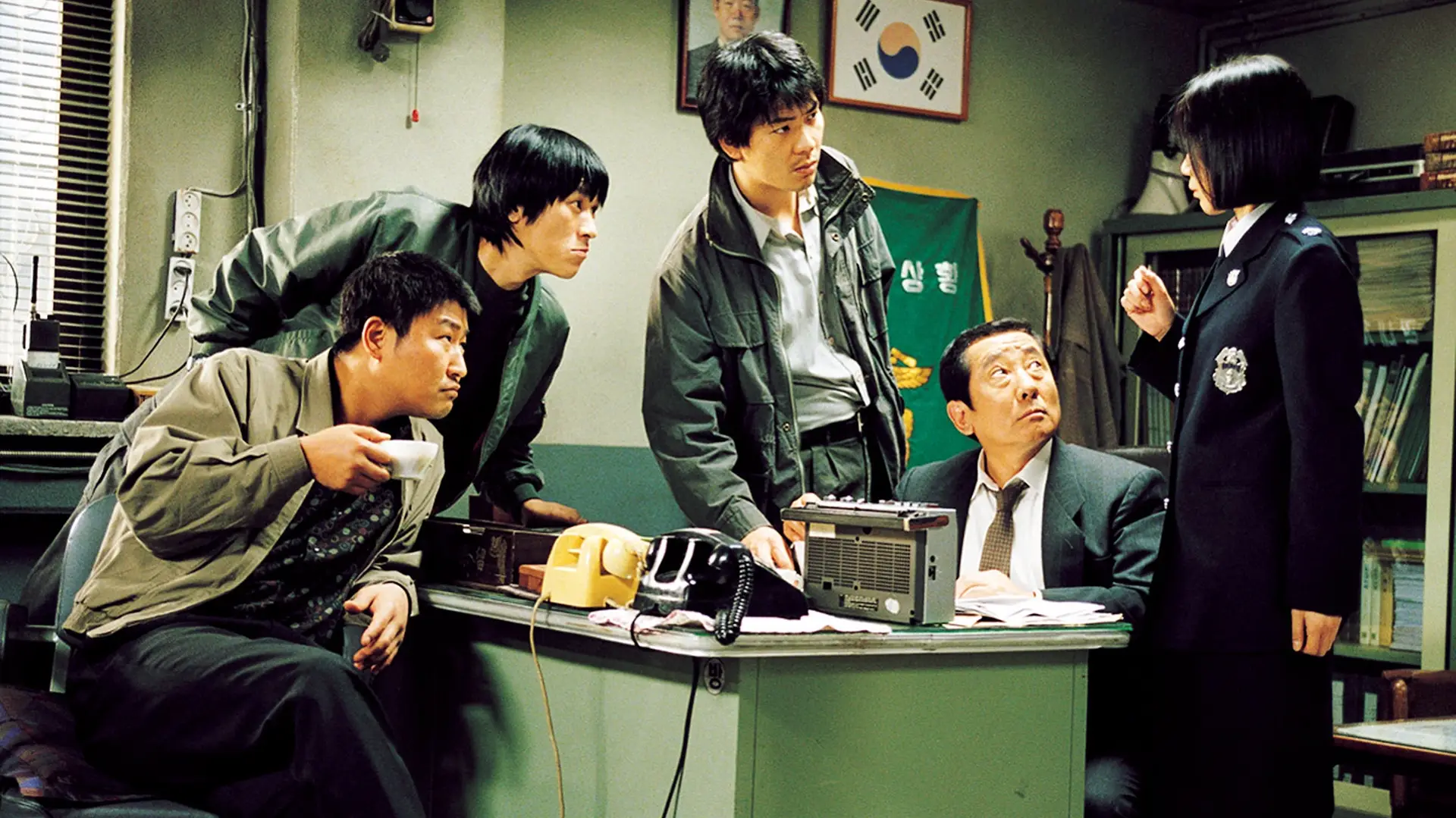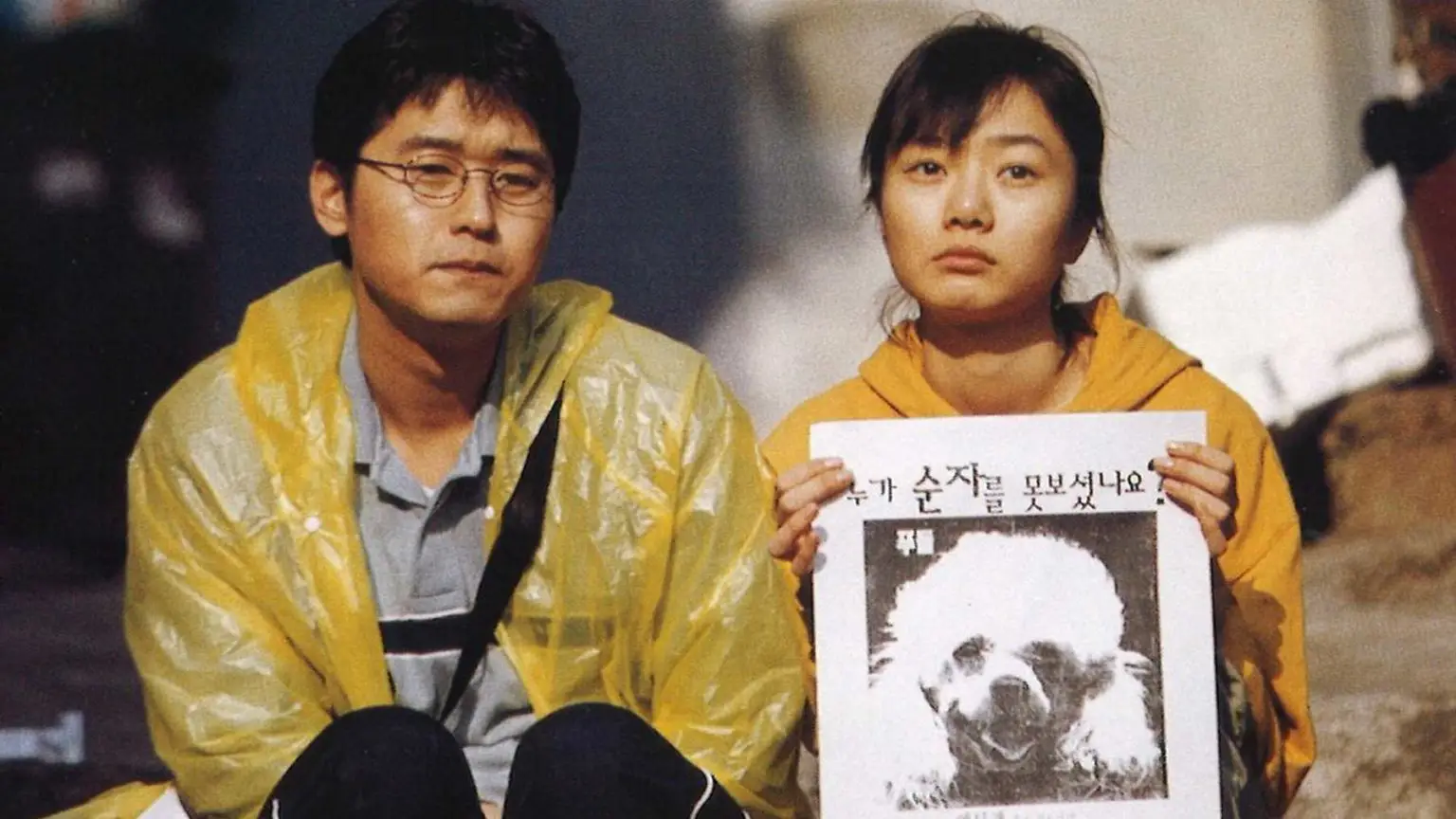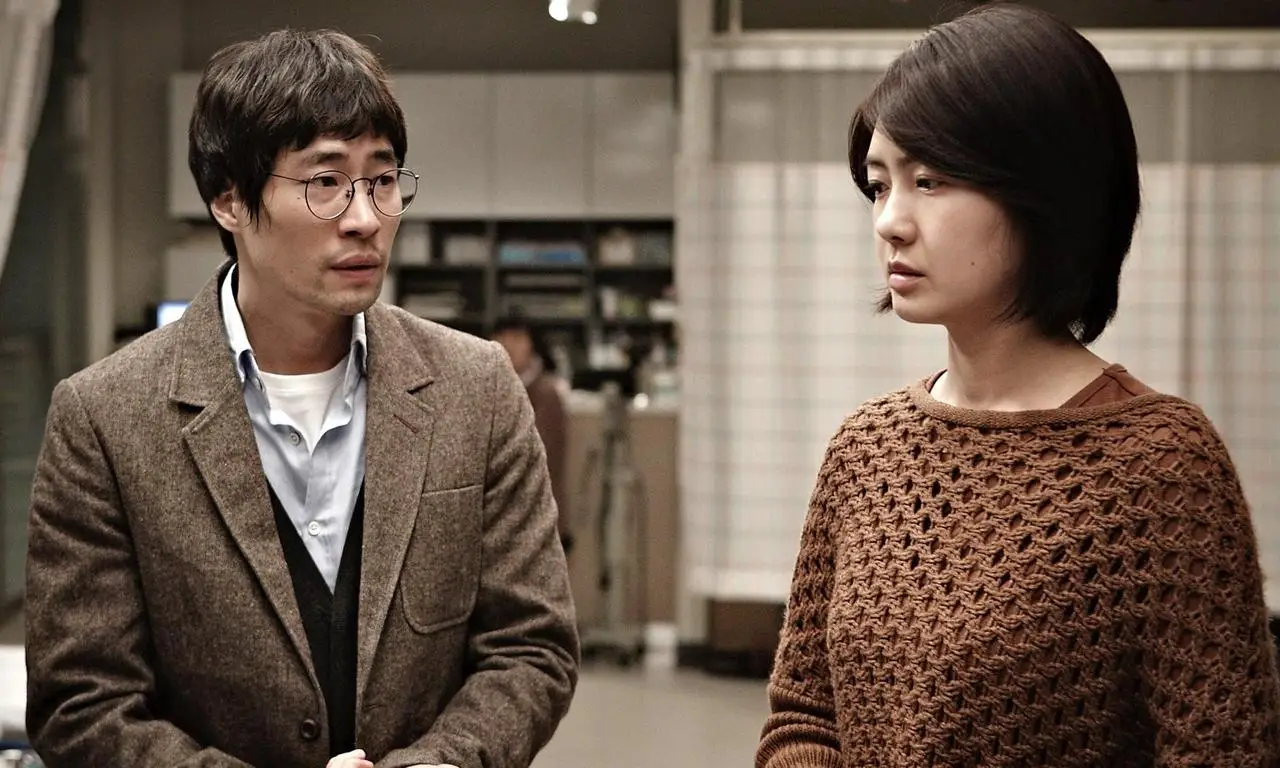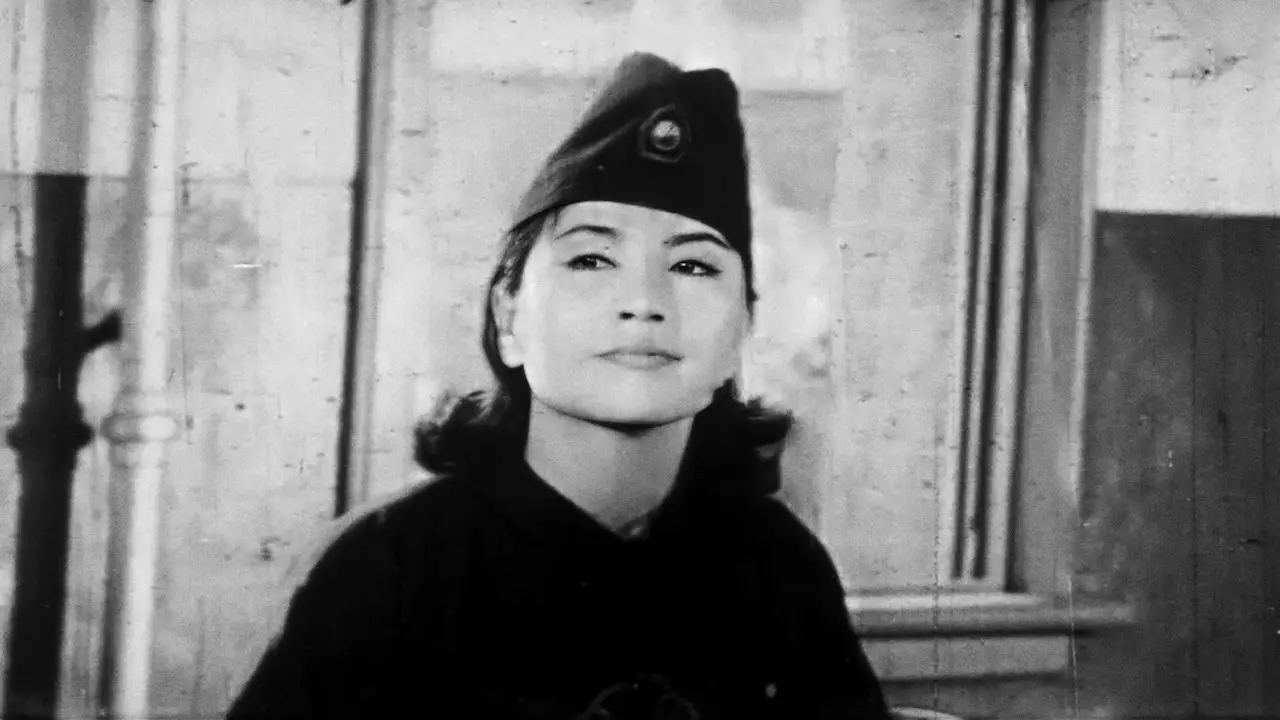The Host (괴물) 2006
Bong Joon-ho’s third full release, ‘The Host’ (괴물, 2006), is an unconventional monster movie that diverges from typical genre conventions. The monster is revealed quickly, with a realistic mutated fish-like appearance. Rather than depicted as ‘evil’, it is shown more as animalistic. The film primarily focuses on a family drama centred around the Park family while providing environmental and political critiques. ‘The Host’ became the highest-grossing South Korean film of all time, earning between $89 million and $97 million worldwide.
‘The Host’ also garnered much praise during the award season, winning four out of its five nominations, including Best Film, Best Actor (Song Kang-ho), Best Cinematographer, and Best Visual Effects at the 1st Asian Film Awards. Domestically, it won six Blue Dragon Film Awards, five Korean Film Awards, three Director’s Cut Awards, and two Grand Bell Awards.
The film opens with an American pathologist ordering his Korean assistant to dump a large quantity of formaldehyde down a drain, which leads to the Han River (Referencing the real-life McFarland incident).
In 2006, we meet Park Gang-du (played by Song Kang-ho), who is asleep while he should be working in his small snack bar at Hangang Park alongside his father, Hee-bong (portrayed by Byun Hee-bong). He only stirs when calling out for his daughter, Hyun-seo (played by Ko A-sung), as he waits for her to return from school. Once he finally wakes up, he leaves Hyun-seo with Hee-bong while they watch Gang-du’s sister, Nam-joo (played by Bae Doona), compete in a national archery competition. Meanwhile, Gang-du heads down to the Han River to deliver drinks to their customers.
Suddenly, a large creature emerges from the river and begins attacking the crowd, causing panic and chaos. Although Gang-du tries to help an American man fight the monster, his efforts do little to stop its rampage. When Hyun-seo emerges from the shack, Gang-du grabs his daughter and joins the fleeing crowd, but they fall. As he tries to run again, he accidentally grabs a hand without looking back, only to realise moments later that it isn’t Hyun-seo’s. He then spots his daughter getting to her feet, but the monster lurks closely behind her before snatching her and diving back into the river.
After a mass funeral for the victims, Park Nam-il (played by Park Hae-il), the brother of Gang-du, attends the ceremony. He is an unemployed college graduate known for his daytime drinking habits. Suddenly, men in yellow hazmat suits arrive, spraying chemicals and forcing everyone present, including the four remaining members of the Park family, into quarantine. The Korean government and the United States Forces Korea (USFK) claim that the creature carries an unknown deadly virus.
During quarantine, Gang-du receives a phone call from Hyun-seo, who tells him she is trapped in the sewers with the creature. Unfortunately, the call ends abruptly when her phone battery dies. Determined to find her, Gang-du and his family manage to escape quarantine at the hospital and purchase supplies from gangsters to aid in their search for Hyun-seo.
The film sets itself apart from typical monster movie conventions by revealing the monster and its origins early on. This shift in focus allows the story to center on the dynamics of the Park family as they combat their flaws while working together to save Hyun-seo.
Yellow plays a significant role throughout the film, appearing prominently in the hazmat suits, the chemicals, and Gang-du’s DIY-bleached hair, which makes him stand out even more. Furthermore, the American operation is referred to as “Agent Yellow.” Bong’s signature imagery, featuring clouds and smoke filling the screen, is also prevalent.
The monster’s design is compelling, as its realistic appearance and subdued behaviour prevent it from being depicted as a typical villain. While the monster plays a central role in the destruction, the government and scientists are portrayed much less favourably. Additionally, Bong uses beer to symbolise the bond between Gang-du and Hyun-seo. Initially, when she tries beer for the first time, Hyun-seo finds it bitter. However, while trapped in the sewer, she later expresses a desire to drink beer and be with her father again.
The film offers a pointed critique of the United States Forces Korea, drawing attention to their apparent indifference toward the local communities. Director Bong Joon-ho elaborated that the fictional virus unearthed at the U.S. military base serves as a satirical metaphor, cleverly commenting on the absence of verifiable weapons of mass destruction in Iraq, which was a significant justification for the conflict there.
Moreover, the chemical agent deployed by the American military to combat the film’s monstrous antagonist is ominously titled “Agent Yellow.” This name is intended as a stark allusion to Agent Orange, the herbicide used during the Vietnam War.
Bong rejects the interpretation that the film expresses anti-American sentiment; instead, his goal is to provoke reflection. The film also critiques the Korean government, depicting their response as inept and uncaring, leaving the Park family to take it upon themselves to investigate and confront the monster.
The film was a massive box office success nationwide, introducing a genre largely absent from domestic cinema: the monster movie. However, it transcended being just a genre film by giving depth to each family member.
Gang-du is a caring father who is often clumsy and makes mistakes during critical moments. Hee-bong, the grandfather, loves his children and grandchild more than anything else. Nam-joo, the most successful member of the family, struggles to win gold due to her inability to handle pressure at crucial times. Nam-il, a college graduate, feels frustrated by his inability to find a job. Although he appears standoffish, it becomes clear that he cares deeply for his family. Lastly, Hyun-seo acts as the glue that holds the adults together. “The Host” is elevated beyond a typical genre film or monster movie because of this unique ‘loser’ family dynamic.
